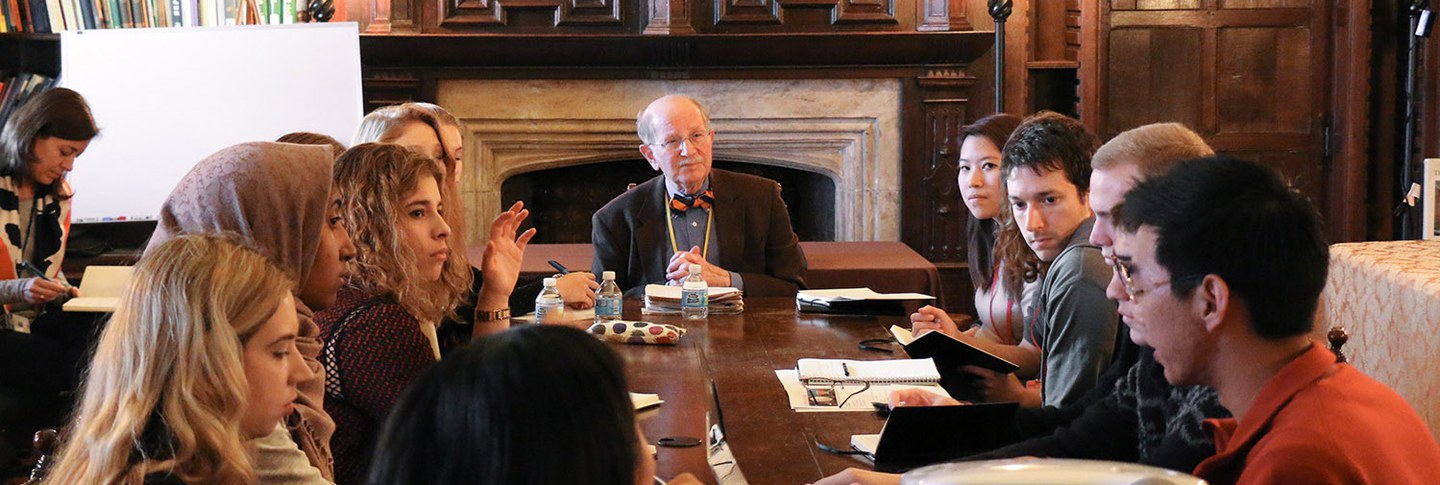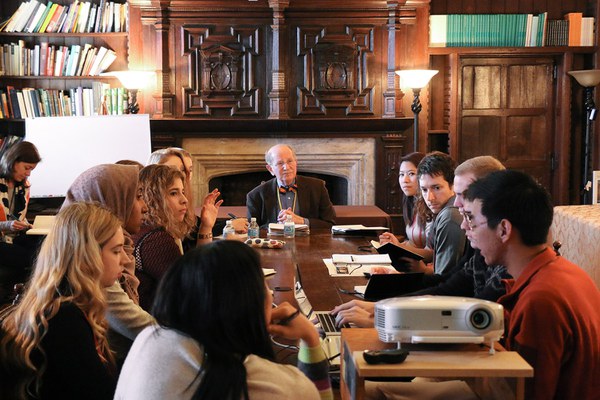By Alexis Boo
The COVID-19 pandemic has created unprecedented pressures for arts and cultural institutions, exposing the complexities and weaknesses of their financial support systems. Compared to other countries, the United States lacks robust federal support of the arts, and philanthropic giving tends to be the fallback in the face of this deficiency. While in usual circumstances this system might be able to support a diverse ecosystem of arts and cultural organizations, the pandemic has exposed how dependence on private funding can put these institutions in a precarious position. Amid closures and significantly decreased visitor capacities, museums are faced with severe losses of revenue; tickets, merchandise, screenings, and workshops are no longer an option, leading to even heavier reliance on donations from foundations and individuals. Donors are crucial to museums for funding acquisitions, exhibitions, and numerous buildings and programs—but during times of crisis, the first priority for institutions is to support general operations such as staff, security, climate control, and collections care. These fundamental needs tend to receive less financial attention, however, as donors often focus on contributions that attract public recognition. The beginning of the pandemic saw a surge of state and federal support that helped fulfill basic operational needs, but this aid was relatively small. National arts-focused organizations such as the National Endowment for the Arts (NEA) and the National Endowment for the Humanities (NEH) offered some relief funding, as well as other general programs such as the Paycheck Protection Program (PPP) and Small Business Administration loans. Ultimately, all this federal giving has waned as the crisis continues, and the spotlight for support has largely turned to philanthropy. The combination of uncertainty, an incohesive patchwork of support, and a lack of sustained federal funding has placed cultural organizations—especially smaller ones—in a vulnerable position, as Stanley Katz and Leah Reisman have recently shown through a case study of the trajectories of cultural organizations in Philadelphia under the combined effects of the pandemic and Black Lives Matter movement, published in the International Journal of Cultural Property.
Faced with the challenges of the pandemic and social justice movements in the United States, philanthropists have worked through new strategies and shifted their focus. Historically, philanthropic foundations have been conservative during periods of economic hardship to protect their endowments. Under normal circumstances, they tend to spend only 5 to 7 percent of their assets. The Ford Foundation recognized the unique and difficult circumstances caused by the pandemic, and in June 2020 pledged to nearly double its grants in 2021 from $520 million to $1 billion. The plan was to borrow money through 30- and 50-year bonds and spend it quickly, hoping that other big-name foundations would follow. Although a handful declined to join this campaign, the MacArthur, Kellogg, Mellon, and Doris Duke Foundations soon followed in Ford’s footsteps. The initiative included a $7 million relief fund for arts and cultural organizations.
While foundations have been adjusting their strategy and relaxing restrictions, museum leaders have also taken steps to modify their guidelines in the light of the ongoing crisis. The Association of Art Museum Directors (AAMD) passed several resolutions that grant museums greater flexibility in using their restricted funds, mainly in support of general operations. For example, endowment funds or trusts are typically restricted for specific purposes such as conservation, research, or art acquisitions, but the AAMD is allowing museum directors to redirect this income to other areas. Another resolution regards the use of proceeds from the sale of deaccessioned works, which has expanded from strictly the purchase of new works to a more ambiguous “direct care” of collections. The AAMD’s goal was to alleviate museums’ stresses by providing greater financial flexibility, and some institutions have taken advantage of these resolutions to fund their general operations under the umbrella of collections care.
Our historical moment may presage broader shifts in philanthropy and the nonprofit sector. The past two decades have seen a rise in “strategic philanthropy,” an approach to grant-making that prioritizes clearly defined goals and establishes specific, data-driven strategies for reaching those goals and evaluating impact. Strategic philanthropy might be considered the businesslike approach to philanthropy and has origins in the Gilded Age. This era saw the rise of industrialization and unprecedented economic growth in America, and business leaders such as Andrew Carnegie and Julian Rosenwald began developing theories and “best practices” for philanthropy that many foundations and donors still observe today. When employing strategic philanthropy, foundations and grantees work together to understand their joint objectives and match each other’s interests. But this method poses a problem for arts and humanities organizations because their value propositions are harder to translate into a numeric value compared to other fields and often take years to accomplish. The financial crisis in the arts and culture sector, with the accompanying need for emergency grant-making, has prompted a shift to “trust-based philanthropy,” which places less emphasis on metrics and prioritizes rapid response and collaboration with community partners. Trust-based philanthropy also adopts a more expansive understanding of impact and accountability, seeking to give more power to community organizations and starting from the assumption that they are a deserving and reliable investment. In some cases, the rules, regulations, and reports of a foundation can get in the way of the work a nonprofit performs, and trust-based philanthropy lowers some of these barriers.
The funding pressures on museums and cultural institutions also coincide with a period of increased scrutiny and accountability that requires them to respond to social movements for equality, transparency, and justice, and address systemic and internal inequities. These questions have come into sharper focus following the murders of Breonna Taylor and George Floyd, among many, and the rise of the Black Lives Matter movement in the summer of 2020. The public is calling on cultural organizations to diversify across the whole spectrum of their mission, from the art in their galleries to their staff and governing bodies. Even when museums try to respond proactively to the demand for equity, diversity, and inclusion, they may run into difficulties.
In the case of the Baltimore Museum of Art, a plan to deaccession pieces to raise funds specifically for diversity initiatives ultimately backfired. Although not in financial distress, the BMA decided to push the limits of the AAMD’s loosened restrictions on deaccessioning works; BMA director Christopher Bedford sought to raise $65 million to expand the museum’s diversity initiatives by auctioning off works by Andy Warhol, Brice Marden, and Clyfford Still. The plan was immediately met with fierce criticism from museum staff and board members, some of whom resigned in protest or to avoid controversy, while others rescinded their future donations to the BMA both in the form of collections and capital. In the face of vocal and broad disapproval from museum leaders and BMA stakeholders, Bedford canceled the sale. Some objections focused on the art to be auctioned off, claiming the pieces in question were central to the museum’s collections and their sale would negatively impact the value of the artists’ works. Others were wary of the implications of deaccessioning to fund staff initiatives: the market value of a museum’s collections dwarfs its operating costs, and if donors or potential donors perceive a museum’s collections as capable of being monetized, they are likely to be more reluctant to support the institution financially. But when museums lack sufficient reliable and flexible funding, especially in times of systemic change and crisis, they are placed in this position of evaluating their collections as a potential cash reserve that could be sold to offset funding shortfalls and support the museum’s and workers’ needs. Ample government funding, with fewer restrictions or earmarks on specific use, would help prevent museums from being put in this dilemma in the first place. Despite the best intentions, the BMA controversy illustrates the challenges and entanglements museums face in undertaking robust diversity and equity initiatives, especially during a time of financial strain.
As museums strive to respond to the historical moment, their governance structure is also under scrutiny. Unlike the for-profit sector, museum boards tend to consist of donors who do not identify themselves as experts in museum administration or related operations. This phenomenon stems partly from the conflation of giving and governance in museum spaces—in order to recognize or publicly reward donors, museum administrators will invite these individuals to join their leadership team, regardless of experience. Museum boards have also come to strive for growth in all areas, which is a business-oriented mindset not applicable to the arena. Increasing attendance, ticket sales, membership, programs, and collections might look like concrete measurements of success, but in reality, their prioritization undercuts the primary goals of a museum. Museums are institutions whose purpose is to provide expertise, access, educational opportunities, and unique and captivating experiences; predicating a museum’s value on numbers is inherently at odds with this definition, as these experiences can’t be quantified and won’t be represented in statistics. When museums are governed by people who have business-oriented goals, they are at risk of nullifying their original mission and jeopardizing their legacy. Additionally, museum boards tend to be demographically homogenous; about 89 percent are white and largely represent older generations, meaning those who make executive decisions about the direction and financial management of the institution do not accurately represent the larger community it serves. The lack of diversity in the boardroom, particularly regarding youth and BIPOC, may be a barrier to the kinds of transformations of their collections and programs that museums are asked to undertake. If these voices are not included during discussions about where to direct investments, the path to a more diverse museum leads nowhere. While philanthropy fuels much of the American creative and cultural sector, the inherent imbalance of power is problematic in several areas, among which diversity is notable.
Philanthropy exerts tremendous influence on the cultural sector, and the ongoing pandemic has exposed several ways its authority can create complexities in the museum space. Foundations have worked to rethink their giving strategies to quickly mobilize their financial resources, and museum leaders are grappling with how best to secure and use funding. The cultural sector as a whole has been forced into an uncertain place, destabilizing established practices to make room for new ideas and initiatives. The museum is a complicated space, and while the pandemic and sociocultural shifts of 2020 have placed unprecedented financial and social stresses on operations and governance, they have also compelled people on both the institutional and individual levels to seek answers for how to reshape the philanthropic landscape to better serve organizations and communities in need .
Alexis Boo was the 2021 intern for our Wintersession course, “Cultural Philanthropy in the Museum Space.”

